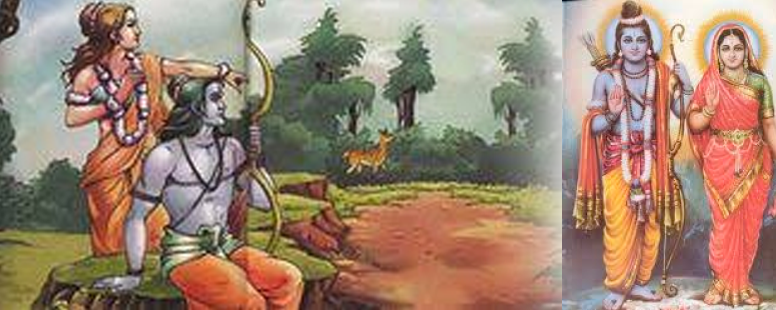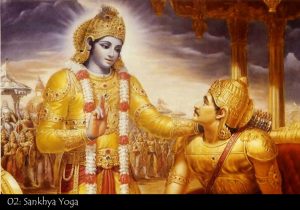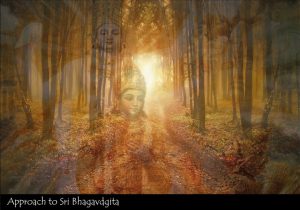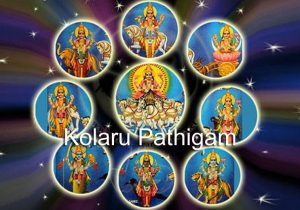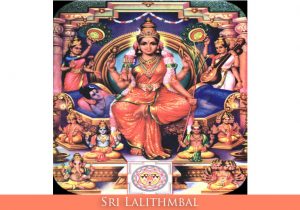Aum Gurubhyo Namah
Dear Friends
Namaskarams.
Firstly let me congratulate and thank Siddhasrama and Sri Balaji for conducting the weekly sloka and Sanskrit classes, a great service which we should all support; thank you Balaji for inviting me once again to share some thoughts on the Essence of Bhakti Yoga at the Sat Sangh today. There are great scholars who have given richer interpretation of Sri Bhagavad-Gita to guide us, so, who am I to say anything more profound than them? Yet every opportunity to be part of a Sat Sangh such as this or any opportunity to engage in a spiritual discourse is a treasure not to be missed. That is why I am here; that is why you are here. Please do listen to me with care and please do discriminate more carefully what I say, from whatever little I know.
You have been learning Sri Bhagavad-Gita. I understand that you have done Bhakti Yoga – chapter 12. So I do not wish to go through these verses in detail but raise a few fundamental questions and invite you to join me for exploring the answers.
What is Bhakti ? Why is it the most important aspect for our spiritual evolution? How does it relate to other aspects of yoga revealed by the Lord in Bhagavad-Gita and finally what do we take from this discussion to put into practice?
In a very simple sentence Bhakti is the most intense love for God and only for God in the path of spiritual development. This may raise a question. What about for those who do not necessarily believe in God in a religious context? Is there an aspect of Bhakti, relevant for their progress? After all, everyone, believers and non-believers are children of God and to be rescued.
The term God does not need to be taken as a religious phenomenon only. Called by other names, God represents an ultimate goal towards which all our lives are being driven to. The scientists seek the cause of all causes which they defined to be changeless. Rational minds seek proof for the ultimate knowledge that creates and changes everything; all human beings, without knowing the exact nature of the absolute bliss, seek happiness in all their walks of life!
Our Sanatana Dharma inculcate these seemingly different goals into One – the changeless root cause as sat, the infinite knowledge as chit and the absolute-bliss as anand, as One sachidananda Brahmam or generally termed as God in all religions. So all our search is for the sat-chit-ananda parabrhamam as per our Sanatana Dharma. Perhaps we may use phrases like ‘intense commitment’ or ‘complete dedication’ for such efforts in the scientific or worldly pursuits; in the spiritual development, the term Bhakti is used – which has lot more meaning and bring out lot more energy for the communion with God. That is the focus of our discussion today.
What is Bhakti?
‘True Bhakti’ does not question; however, such a state cannot be reached without questioning. The word ‘quest’ is the root for ‘question’ which is essential in the path of knowledge. Without asking we do not understand. In the pursuit of God, we need to keep asking until we understand that God is beyond our understanding but can be within our grasp and realization through love. When we understand that God cannot be understood, then we turn to Bhakti; such unfailing contemplation on God is Bhakti.
But what is true Bhakti?
We see people walking on fire; some prostrate in front of idols; some fast, some perform elaborate rituals; some read spiritual texts; some visit temples, some simply contemplate on the formless nature; do all these represent Bhakti? Is nama-sankeertan Bhakti? Are pilgrimages and yatra imply Bhakti? Is adoring an ishta-deveta or personal god Bhakti? Do reciting mantras, slokas and bhajans refer to Bhakti? Even great acharyas like Sankara, Ramanuja, Madhva are seen to give different views on our relationship with God. For a casual reader, even Lord Krishna seems to assert Karma as the primary path at one stage, Bhakti at one stage or Gyana the other!
What is our choice?
Choices sometimes do cause confusion; I remember when I was young, coming from a middle class family, the choice of food at home was limited. When we came back from school, there would be something on the table, which we just ate and got on with play, study etc. Life was so simple.! Not now, when my kids come home these days, they open the fridge, thoughtfully parse all options, discuss what to eat, negate each of them and ultimately order something from a Chinese-take-away!
Choices are not bad, they enrich us as long as we know how to choose, appropriate to the situation and our condition. In the case of spiritual elevation, choices are a great bonus. That is why we seek the help of our scriptures, and find what choices we have!
All great religions speak of the same truth. Etymologically, the word legion means an unified group, so religion means to bring alignment with the One. The One God or ekam satyam is the declaration beyond all forms, norms or names. Be it Kuran or Bible or Grantha, all scriptures assert on One God only. However Sanatana Dharma brings two key differences: Firstly the expressions of God in Sanatana Dharma is very rich! For us God is not some external power sitting in the Sky or some Heaven; God is all pervasive in the macrocosm, as well as in the microcosm; Secondly, in our Sanatana Dharma, the paths to reach God or communion with God are plenty! Many ways (or) methods are needed to suit many different abilities and conditions of human beings. So there are choices, but which one to choose? Perhaps a strong one may take up any one path and maintain steadfast commitment till the goal is reached; a smart one may seek a culmination of various paths to ease his progression, like eating a balanced food.
What is that spiritual food that we need for our spiritual hunger!
We will see this as Bhakti.
In Sri Bhagavad-Gita, there is one important verse, often quoted by everyone;
This is in Chapter 18 – verse 66.
Lord Krishna imparts the last word to Arjuna in this verse.
sarva-dharman parityajya mam ekam saranam vraja aham tvam sarva-papebhyo moksayisyami ma sucah (18-66)
Abandon all varieties of religion and just surrender unto Me. I shall deliver you from all sinful reaction. Do not fear.
The phrase ‘sarva-dharman partiyajya’ means to give up all obligations/onus. There are different interpretations for the word ‘sarva dharman’ but the general spirit of the text is that the devotee just needs to surrender at the divine feet of the Lord, giving up all his bondages or obligations by doing which ‘aham tvam sarva-papebhyo ma sucha’ meaning ‘I will clear all your sins and liberate’ as the Lord declares.
Many, even some of the noted scholars, interpret or even assert that this verse is a clear instruction to show karma, gynana, dhyana and such varied paths are all not necessary; surrender to God is the only thing mandated; This interpretation is correct as it reveals profound truth!
However it may also be incorrect for those who are not fit to receive such instruction. Only a ‘true Bhakta’ who is at the apex of his spiritual evolution can absorb the wisdom of this verse; for others such an interpretation may mean missing out on many essential steps of spiritual evolution that are laid in all the earlier verses of Bhagavad-Gita.
Take an example. My neighbour’s son is worried about the exams; he has not prepared well and is not sure of handling the pressure. He thinks of failure and even absconding from the exam. His father notices the anxiety and explains to him why taking part in the exam is necessary. He sits with him, tells him how to prepare including the benefit of revising in the early mornings, trying last year’s question papers, use of Internet searches etc. Lots of instruction and guidance are given to the son. On the day of exam, he sees the son who is still holding many books in his hands; He tells him ‘Son, drop all the books now; just take the pen and go to the exam, all will be fine’. Suppose I hear only the last instruction, and as a true admirer of my neighbour, I go to my house and tell my children, ‘drop all the books; do not study; just go to exam; all will be fine’, would I be correct? No, that would mean, I have completely ignored what has been previously said by my neighbour for preparing his son. The context must be correct and the instructions must befit the recipient.
Arjuna at chapter 18 – having understood all that was said before, is all ready to carry on with his duties without any desire. His love for God is immense and his state is of a true Bhakta. He is a fit recipient.
True understanding of this one sloka is good enough. But to be a fit-recipient of this sloka, one has to elevate to the state of true Bhakta.
For this, we must first look at the relationship between Bhakti and Gyana.
When we read Bhagavad-Gita, we often have questions such as: Between Bhakti and Gyana , which is superior? What leads to what?
A simple answer is indicated in a famous proverb: “A wise-man needs to walk a long-way to see his God but a child is ever on God’s hands”. How beautiful this is! Yes, abundant love and absolute innocence of a child is closer to God than the abstract knowledge and intelligence of an aspirant. In the pursuit of God, knowledge is good but not good enough. Knowledge without Bhakti is useless! Remember this sentence and we will review this again.
We need to understand how can we become a true Bhakta.
In chapter 4, long before Bhakti Yoga which is in Chapter 12, we have some cues. The Lord addresses Arjuna as Bhakta for the first time.
sayevayam mayaatetya yOgaprokta puraatana: bhaktosime sakhaceti rahasyamitet uttam (4.3)
The same ancient yoga has been told to you today by me, for you are my Bhakta and friend and this secret is supreme indeed.
Here Arjuna is called Bhakta. We all know that Arjuna and Lord Krishna were friends from young age. It is understandable that Lord calls him ‘sakha’, a friend! But why is he called a Bhakta? At this stage at Kurushetra, what qualities that Arjuna have demonstrated to claim such a honour? Has he performed rituals, pujas etc? No, Arjuna has fulfilled the most fundamental requirements for to be a Bhakta. If you recall in the last discourse, I gave ASDA – the name of the supermarket – as a cue for two key requirements: Absolute Surrender and Desire-less Action for success. Arjuna has demonstrated these. He has completely given himself at the divine feet of Krishna. Although Krishna is his friend – his Bhakti is sneha bhava – the absolute surrender has made him to qualify as a Bhakta.
Absolute surrender requires ultimate strength of character, because one has to give up one’s ego. Surrender at the worthy feet of Guru or the divine feet of God is not a sign of weakness but strength; ‘true surrender’ is ‘true transference of responsibility’; it is the key to freedom.
The ego of Arjuna led him to complete delusion in the Chapter 1. Then he lost himself at the divine feet of the Lord and asks for refuge and relief. Although he has not surpassed the path of Gyana yet, or shown complete compliance to the Karma Yoga – yet Krishna calls him a Bhakta.
It is a proof that to be a Bhakta you do not need to be special. You may not yet have the ability to follow the path of desire-less action. You may not have the discriminating intellect as proposed in the Gynana yoga, you may not have the qualifications or guidance to perform deep meditation or penance or Dhyana yoga – yet you can become a Bhakta. Lord has shown this by calling Arjuna a Bhakta in Chapter 4.
It is because Bhakti seeks no prerequisites; it does not matter – who you are, what social status you have, what qualification you possess, whether you are rich or poor, good or bad, young or old, man or woman, beautiful or ugly – no such attributes define Bhakti. If you have undeniable love, unassailable faith and absolute surrender to God, you will become a Bhakta.
Take Dhurva or Shuka; they were children when showed remarkable devotion to God. Ratnakara, Ajamila, Tondaradippodi Alwar, Valmiki, Naryana Bhatta were not men of virtue before they turned to remarkable devotees. In the same way Nammalvar, Turppanalvar, Nandanar, Badrachala Ramadass, Kanakadas, Ravidas et al were considered in those days as born in socially lower class, yet rose to the apex of Bhakti. Tukaram, Kabir, Guru Nanak were not scholars but thru Bhakti they became world gurus. Hanuman, Sugreevan, Garuda, Jambavan were not even humans but demonstrated divinity through devotion to Lord. Mira, Andal, Avvaiyaar are examples of women who rose above all thru Bhakti. Even Ravana, the demonic king was known for his pious devotion to Lord.
This is a great assurance for all of us, is it not! This is the first key point we understand from this verse. We also observe that Bhakti can make one Supreme.
There are also three key points to note from this verse.
Lord says that “you are dear to me and I will give you the secret”. As Arjuna is a Bhakta – his love for God leads God to give him the most secret knowledge.
When you love someone, you always want to give the best. What would be the best gift that you would offer to those you love? Shopping vouchers? Expensive gifts? Great food? If you have to give the best that you have, what would that be? It is you, yourself, is it not? You would give yourself, won’t you! Here Arjuna, by his absolute surrender has given himself to the Lord. God says that Arjuna is dear to him. As God is never a debtor and always gives handsomely in return, what can God give to the true Bhakta? Whatever the best in God, is it not! That means God gives Himself to the Bhakta. As we learnt before, in Sanatana Dharma, God is ‘Sat’, ‘Chit’ and ‘Ananda’. By giving Himself, God gives Sat, Chit and Ananda to the Bhakta. In this verse, by indicating ‘I will reveal the most ancient secret knowledge’, God is indicating the ‘chit’ aspect as the gift to Arjuna.
The verse gives two other significant instructions.
The essence of what one acquires at the end of Gyana yoga is given to Bhakta – free of charge. The return on the invest of Bhakti is the love of God and His revelation of supreme knowledge or Gnosis.
There is yet another important point in this verse. Gyana is not something you achieve through intellectual pursuits alone. You may have accumulated all the knowledge yet you could still be void of wisdom, the anuboothi or the realization of Truth. One needs the divine grace of God to gain such anuboothi which requires Bhakti. We thus learn that Gyana is key for the realization of God and Bhaktas gain such Gyana by the grace of God.
OK, we understand.
But our Bhakti is not same as that of Arjuna. Our Bhakti is typically the petition of requests to God, is it not? We have mortgages to pay, college admission for the son to be secured, daughter to get married, the promotion still pending, grandma to be cured etc. So many woes and so long are our petitions. Is this not Bhakti?
Yes, seeking God’s help for our worldly matters is also a form of Bhakti; please do put petitions to God. At least at time of distress, if you are able to think of God, that is good. But it is not good enough.
In chapter 7, the Lord says that there are primarily four types of devotees.
chaturvita bhajandemaam jana: suktrina arjuna arto jinjansu artaarti gyanicha bharatarashya (7.16).
‘arto’ – One who is in distress and seeks relief; ‘ jinjansu’ – the second one seeking knowledge and power , ‘artaarti’ – the third one seeking wealth and the means to materially prosper and the fourth one, ‘gyani’, the wise just for the pure love of God. In Gita 7-18, the Lord also says that all four types of devotees are good ‘udaaraa’; yet the one who is wise or a true Bhakta is the most liked one. Such a devotee becomes the Lord Himself.
udaaraa sarvevithE gynathvaatmai emematam astIta sahiyuktaatmaa maamEvanutta maamkattim (7-18)
Therefore, our plea to God for our worldly desires are fine but the true progress is to become a Bhakta with Gyanam. How do we reach that stage? For this we need to understand the nature of a Bhakta. This the Lord indicates
yo na hrishyati na dveshti na shochati na kaanshati shubha ashubha parityaagee Bhaktimaanhyaha sa me priyaha (12.17)
A Bhaktiman is one who neither rejoices nor hates, neither rejoices nor grieves, he who has given up good and bad, (such a) devoted person is dear to me.
The greatest Bhakta is Sage Narada. He is full of love and He instils Bhakti in our hearts. Remember, wherever you are, – be in a temple or at your prayer room or in a Sat Sangh like these – if you feel Bhakti in your heart believe that Sage Narada is present. Whenever your heart moves in divine love to God, believe that Sage Narada is near by. Why? That is the vow that Narada has taken. Narada is said to be the son of Brahma. After learning the supreme truth from His father, Narada vows that He would traverse across the universe – especially to instil Bhakti on the Earth as a key remedy in the Kali yuga.
In fact, the puranas say that Narada first wrote a text called Narada Smrti , dealing primarily about the Karma yoga; then He compiled a Narada Panchrathra, which brings devotion to the ritualistic worship; yet not fulfilled, Narada finally concluded that Bhakti is the best for mankind and so delivered Narada Bhakti Sutra. In fact the puranas say that it was Sage Narada who instructed Vyasa to compose Srimad Bahagavadam. Apparently Veda Vyasa was not fulfilled even after compiling all the Vedas; then Narada asked Vyasa to compile a text that is full of love and absolute devotion to God, reading of which anyone would gain emancipation. Srimad Bhagavadam is the most revered epic on Bhakti.
Sage Narada in the fifth sutra reverberates what the Lord has said in Bhagavad-Gita about the key traits of a Bhakta.
yat prapya na kincid vanchati na socati | na dveshti na ramate na utsahi bhavati;
?
A true Bhakta neither desires anything for sense gratification, nor laments for any loss, nor hates anything, nor enjoys anything on his personal account, nor becomes very enthusiastic in material activity. True Bhakti means not having an iota of worldly desire – na kinchid vanchati.
Why is desire an impediment for Bhakti?
To desire on worldly things would mean attaching our mind to such things – a deviation from the constant connection with the God. True Bhakti requires undivided attention and love on God. But when there is desire on another worldly object, the desire will steer the mind towards such object. Desire glues the mind to the objects of desire. You may say, ‘look, I can think of God as well as others at the same time – as a multitasking computer’. But you cannot. Although we believe that we think of many things at the same time, in reality, our mind is capable of attaching to only one thing at a time. But the time-slicing is so fine as the mind jumps from one object to the other so fast, we believe that we are capable of thinking about many things at the same time. Like the multi-core CPU in the computers….yes, there are parallel processing going on but the master clock in a computer systems that allocates the time reference is typically one and it does only one thing at a time. Only the speed of the processors delude the linearity of events. So, desire on worldly object would mean, moving the mind away from God. As this dilutes true bhakthi, desire is not good.
But how can we be without any desire?
Is not all our actions in the world driven by some form of desire or worldly motivation? Yes, but the object and scope of desire are to be controlled. For this you need ‘vairagya’ or the steadfast commitment.
Suppose as I drive around Knightsbridge area in London, I find beautiful houses and my mind desires for living in such a house. If it is deeply seeded in my mind, it will burn. So how do I remove or curtail such desires?
One way is to attend to it in the spirit of Karma yoga. Ok, this house at present is beyond my means; to acquire necessary mortgage, my annual income has to raise; the only way to achieve this is to get the promotion at my job; for this to happen, I must perform better; it is not enough to do my job well but I must ensure that my contribution do help the wider organization goals; so I just have to focus on doing what I am supposed to at my work but for a wider cause. This means, the burden of desire on the house is not needed; instead I focus on doing what I should do the best. This is one way of curtailing the unwanted desire.
On the other hand, I may approach the desire in the spirit of ‘Gyana yoga’. I may question the very use of such desire. Why do I need such a big house? I only need a small place to live! No one takes their wealth with them when they depart this world. Steve Job of Apple, one of the greatest visionaries, a very rich man, passed away recently, leaving his vast assets behind. So my desire on such wealth is unwarranted. I therefore do not desire. This is one way of dissolving desires. So either way, if I have the ‘vairagya’ to cut asunder the budding desires, I can ensure my un-failed attachment to God, in the pursuit of Bhakti.
Well, what about distress in our lives?
How can we not worry about our troubles? Who do we go to when we cannot find way out of our miseries? Surely we should seek the grace of God; He is there as our solace. But let us ask Him not to give us escape routes from the ordeals of life, but the true courage and strength to cope with those.
You might have heard about the story of butterfly. As you know butterfly comes out of a caterpillar – a process called metamorphosis. If you have watched this, you would be moved. A little boy was watching a cocoon pregnant with a caterpillar. He waited every day to witness the marvellous flight of the butterfly coming out of the cocoon. At last one day the cocoon had broken and the caterpillar which was forming into a butterfly was slowly releasing from the cocoon. The boy’s joy was unbound. He could not wait to see the flight. He watched but there was struggle. The cocoon did not open fully and the butterfly was struggling to get out. Out of pity, the boy took a knife and sliced the bottom part of the cocoon to release the butterfly. But it did not work. The butterfly simply fell down; it was struggling to take off as it could not lift its bulky body; after some struggle it died. What happened? Had the butterfly gone through the struggle, the cocoon’s tighter shell would have put pressure on the lower body to squeeze out extraneous body fluid as mother-nature has planned for; then with the lighter body, the butterfly would simply fly out.
Understand that every struggle has a purpose and a hidden opportunity; avoding such experiments will fail us in the long run. So do not ask God to change our destiny, to relieve from the ordeals of life but give you the courage and strength to cope with those, bravely. If your mind is totally absorbed in God, He will take care of your problems; His invisible hands will lift your weight and wipe your tears; You will cope with whatever the world throws at you.
In the Bhagavad-Gita, there is a whole chapter-12 devoted to Bhakti Yoga. Comprising of twenty verses, in this chapter the Lord explains different types, stages and significance of Bhakti – the most desirable quality for earning His love. But at the end of Chapter 11 – we see Arjuna was already given the essence of Gita.
The Lord says
mat-karma-krn mat-paramo mad-Bhaktah sanga-varjitah nirvairah sarva-bhutesu yah sa mam eti pandava (11-55);
By dedicating all actions unto me, looking at me as the Supreme Lord, by being my Bhakta, free from any entanglements, showing no enmity to all beings, Arjuna, you will come into Me.
This one verse is enough to describe Bhakti as the culmination of all yogas described in the Gita.
Dedicate all actions unto Lord which means absolute surrender and desire-less actions – the very essence of Karma yoga; looking at me as the Supreme Lord is the understanding of the Supreme Truth without any iota of doubt, the gnosis of Gyana yoga, Be my Bhakta, unconditional and unwavering love for the God, the spirit of Bhakti yoga, the ultimate state of supreme existence in this world; we will be free from all bindings, ever free and liberated and equanimity with all beings, the perfect state and therefore be the every part of Lord Himself.
But Arjuna, who is representing the mankind, still has the questioning mind.
Instead of taking the instruction at the end of Chapter 11 as the final word from the God, Arjuna raises more questions.
He asks in the first verse on the next chapter Bhakti Yoga: “God, I understand, I have seen you as a friend, I have also seen you with four-hands in a divine form, by Your grace, I saw You in every form in the universe (viswaroopam) and also absorbed in your formless nature (aksarabrhamam). Lord, I am confused, tell me: who is better positioned: the One who prays to the un-manifested, unmoving, eternal, formless Brahmam or the One who prays to different forms of God? Which is better?”.
Arjuna had the most special, wonderful vision of Lord in His viswa roopam. The term ‘viswa’ means the world, ‘roopam’ means forms. By showing Himself in ‘viswaroopam’, Arjuna was granted the vision to understand the divinity in every form in the world and God as the pervasive, embedded spark of life in all.
This is the question that led chapter-12 namely Bhakti Yoga which is truly the bridge connecting to Gyana Yoga that follows chapater-12.
The Lord says that there are two types of Bhakti namely, para Bhakti and apara Bhakti. The former is the contemplation of the un-manifest, formless, Brahmam, while the latter is the devotion to a chosen form of the Brahmam. Para Bhakti is very difficult to undertake and only a few are able to achieve this. But Apara Bhakti which is worshipping of a form is easier and preferable; Although both types of Bhakti will only lead to God, the Lord advises Arjuna to start with Apara Bhakti.
Arjuna’s experience also proves this.
Arjuna has seen Lord Krishna in a human form, also in a divine form and in infinite forms during the viswaroopa darshan; he also experienced the formless nature of Lord as the aksharabrahmam. But Arjuna could not hold such magnificent vision for long; He pleads to Lord Krishna to appear before him in a known form, because he could not hold his vision. Understandable, is it not? Can you look at the Sun for more than a few seconds? Impossible is it not?
Similarly is the contemplation on knowledge; Gyana or true knowledge is said to be like ‘agni’ the fire. It is not possible to be engaged for long or singularly focused on knowledge for a long time! We will soon get tired! While prolonged focus on intellectual analysis or contemplation is difficult, we can stay in a loving emotion forever! One can be blissfully, emotionally engaged forever.
This reveal a key lesson: Gynana is absolutely necessary to raise higher; but to stay higher, we need Bhakti. That is why Arjuna pleaded to Lord, “please come down, I cannot focus on the formless aspects or the supremely true knowledge form of yours. Let me see you in the form that I can associate easily.” That is why the question arises in his mind about para and apara Bhakti.
To understand this, we need to look at Bhakti in two perspectives. Bhakti as the means and Bhakti as the state.
The first one as the means or process for our emancipation or the love of God; the second as the state of our being in the love of God. We can say a Bhaktiman is one who practices various forms of Bhakti. Like Saktiman one holds the power, Bhaktiman employs devotion to progress towards God. Here Bhakti is a means. Contrary to this, a Bhakta is a devotee who is at the highest state of communion with God. Here Bhakti is a state. Bhakti being the means and the state must be clearly understood. When we compare karma path or gyana path or raja yoga path with Bhakti, we are comparing only as the means. In fact, all these yogas as the means, will elevate you to the ultimate state of Bhakta. All these merge into one – a supreme state of bliss – communion with God – as the Knower of Self – a true state of Bhakta.
Let us first focus on Bhakti as the means, which is said to evolve in three stages.
The first is bhAya Bhakti – devotion to a form that is external to us. This is the initial stage of Bhakti and common to all religions. Every religion has some form of bhAaya Bhakti. Without this, the relationship to God cannot be expressed. Lord is assumed to exist outside us in some form, in heaven, temples, holy places etc. and the devotion involve rituals, worships, pilgrimage etc.
However, in Sanatana Dharma we progress beyond this.
The second stage is ananya Bhakti or devotion to a specific personal God. While bhAya Bhakti involves abundance of names and forms for worship and therefore for the uninitiated a certain level of confusion, in ananya Bhakti, a specific personal God is chosen to which unshakeable adoration is given. This gives more focus and clarity but there is a risk of vain arguments such as which approach is better or which God is superior etc, only when there is absence of true Gyana. There is a Tamil song which says ‘appanaip paadum vaayal subbanaip paadamaaten’ meaning that as I worship Lord Siva, I will not worship His Son, Lord Subrahmanya. It is a sign of aggressive bhakti that is void of gyana. Such bhakti caused historic evidences of conflict among great ananya Bhaktas and even today impacting religious disharmony in some nations. We saw before why Gyanam without Bhakti is useless. Now we also understands Bhakti without Gyanam is dangerous. But it is only a risk when there is lack of understanding of the true nature of scriptures.
The final stage is ekanta Bhakti ; While the previous two stages represent the tamasic (latent and inertia driven) and rajasik (passion and anxiety driven) nature of the devotee, ekanta Bhakti is the result of satvic (balance and equanimity driven) nature of the devotee. Here the devotee transcends the means to an end. He is now a true Bhakta as he understands the culmination of desire less action in the worldly affairs, all attributed the Lord, all knowledge on Him, all steps towards Him, like the Gopis following the Krishna in Vrindavan or in the ecstasy of Sri Ramakrishna Paramahamsa.
Therefore depending on our state of wisdom and the maturity on Gyana yoga, we choose Para or apara Bhakti margam or ways. We may start with bhAya Bhakti but our goal is to move towards the ekanta Bhakti. That move will happen over time and our Sanatana Dharma has provided many ways for such spiritual progress.
Let us look at the expressions of Bhakti.
Who else, other than Prahalada, can define this! Prahalada imbibed the name of Hari when he was in his mother’s womb and cherished absolute devotion to the Lord; ultimately he turned out to be the true Bhakta of Hari, so much so to challenge the mighty King to prove the true powers of God. In Bhagavadam, Prahalada shows nine different expression of Bhakti.
Of these, definitely the first four are for ordinary mortals like us.
First is shravanam or listening to the recital of names and the glory of God – wherever by whomsoever such glorious sound comes, please listen. Our ears are the only organs of knowledge with the input-capability only. Unlike eyes or mouth, ears have no physical shutters to close; in a pair, the ears are always open and ready to hear and learn.
Second is smaranam or reciting the names and glory of God – whenever and wherever possible. This is the result of shravanam. To do this, one needs nothing but love. There is no need for elaborate rituals or knowledge or resources. Whether sitting, standing, working, travelling, playing or praying, our smaranam can continue.
That would lead to the great ecstasy of dancing and singing of God’s names and glories known as nama-sankirtana. We see many devotees singing and dancing and mostly appearing to be intoxicated with love of the divine; such devotes may appear to be little ‘crazy’ to those who do not understand their true love to God.
At the height of the contemplation, the expression of Bhakti is shown by archana where mantras are used for the worship of God. This is not necessarily the ritualistic ‘vaideeha bhakti’ but out of true love to God.
All these four expressions of Bhakti will lead to the higher state of Bhakta.
There are other four forms of expressions that Prahalada defines and these are only applicable when we are able to comprehend the divinity in a form closer to us.
Often many may wonder, why there were great incarnations of God on the earth, great seers and divine personalities, worthy of adoration in the olden days, but not so in these days? This is not correct. Divinity always exist; divine forms of God always reveal in this world. There are among us; But as we do not seek, we do not see.
When we seek and see the divinity in the form closer to us, the other expressions of Bhakti are possible. Like vandana or saluting to the God, dasya or serving to God, padasevana or being under command to God, sakhya or befriending with God and atma-nivedana or dedicating oneself. Hanuman showed ‘dasya’ expression of Bhakti to Sri Rama. Lakshmana performed padasevana. Arjun showed ‘sakhya’ expression for his love to Lord Krishna. Sri Ramakrishna showed ‘atma nivedana’.
There is also different levels of intensity of Bhakti.
Jagadguru Sri Adi Sankara, the greatest advocate of advaita (non-dualism) doctrine, showed us the significance of Bhakti through his magnificent compilations of slokas and texts. In Sivananda-lahari (verse 61), Sri Adi Sankara gives five analogies for the intensity of Bhakti.
The first is ankola tree (botanical name Alangium Hexapetalum); its seeds when fall on the ground would move towards the base of the tree and join the roots by their own nature. Similarly with a one-pointed purpose, the devotee should be seeking the divine feet of God in devotion. The second example is iron ore that is attracted to the magnet; the third is the love of a chaste wife to her husband, fourth is a creeper and the tree around which it winds itself and finally the river which is bound towards the ocean.
The great Paramacharya of Kanchi have beautifully explained the gradation among these analogies. In the first two examples, the duality of the components of the system is clear and this indicates ‘dvaita bhava’ as articulated by Sri Madvacharya: “God and I are separate and through intense love, I reach the feet of God.” The third and fourth analogies bring out a much finer relationship, moving more towards non-duality but the aspects of duality is still emphasized. It represents ‘part and whole’, the whole being the God and part being all forms. This is viSishTAdvaita advocated by Sri Ramanuja. The final example is truly non-dualistic; once the river joins the ocean, the union is irrevocable and the merger is complete. The Jivatma-Parmatma union is indicated as expounded by Sri Adi Sankara as advaita doctrine.
So we understand different type of Bhakti, different expressions and different intensities of such expressions of Bhakti. We understand Bhakti is a necessary means underlying all yogas and ultimately lead to the supreme state of Bhakta.
But still there are couple of questions.
We may variedly say, “I am a devotee of Rama”, “ I worship Lord Muruga”, “ I am devotee of Siva”, “I adore Ambal”, “ I worship Allah” or “ I go to Church and pray to Jesus” etc.
Can any form of worship is ok to become a true Bhakta?
“No worry”, says the Lord.
yoyoyamyam tanum Bhakti srattayaarchitum ichchati yasyatasya achalam sraddam tameva vitatami aham (7.21);
Whatever form any devote with faith wishes to worship, I make that faith of his steady. What a wonderful assurance. We do not need to convert from our heritage, family tradition, religion, belief, creed etc., as long as our devotion is pure and stead-fast.
Very interesting is what the Lord says. If someone sincerely worships a particular form of God or particular approach for communion with God, the Lord makes that faith into a deep rooted conviction in that person. That is why it is futile to engage in vain argument or conversion of faith among the devotees. More sincere devotees are in their chosen paths, more stronger will be their convictions, thanks to Lord’s assurance. Clearly, respect, reverence and acceptance to all form of worship should be the case proven by this verse.
Right, but we still have a niggling question.
Vedanta teaches about liberation. It was told that the finality is the eventual emancipation; liberation from samsara, the cycle of birth and death. If that is the highest goal to seek, should a Bhakta ask for it? If True Bhakta has no desire, how can he desire moksa or liberation?
“No need to desire for liberation ” says the Lord.
Just by being the true devotee, the Lord makes him eternal. He assures this in Chapter 9 verse 31.
kaundeya pratikgyanti na me Bhakti pranashyati.
“Na pranashyati” means, the devotee never perishes. He crosses the cycle of birth and death. You cannot achieve such kaivalyam (emancipation) by mere knowledge; you need devotion for the grace of God without which liberation is not achieved.
This is the most important part to understand.
The Lord says in chapter 18.55:
bhaktya maam abhijanaanaati yaavaan yas ca asmi tattvatah Tatomaam tattvato jnatvva visate tad anartanam (18.55)
By true devotion, he knows me in truth what and who I am; then having known me in truth, he forthwith enters into me. This means, no matter how much of intellectual pursuits one may undertake, devotion to God is needed to get His grace, which will give the required Gnosis the ultimate result of Gyana yoga; with that knowledge, he reaches the ultimate state of a true Bhakta and therefore enters into Lord.
Finally we can appreciate the true meaning of the ultimate wisdom imparted by the Lord in the last verse (18-66) – which we stated earlier.
sarva-dharman parityajya mam ekam saranam vraja aham tvam sarva-papebhyo moksayisyami ma sucah (18-66)
The true meaning of absolute surrender and surrender alone can liberate us when we are fit to understand this verse.
What do we take it from here?
As we approach the lunch time, let us get the Bhakti Sandwich – a highly nutritious most balanced diet. Here it is: the bottom layer – the basis on which the sandwich rest is the “absolute surrender”. Let us top it up with the layer of starch, “desire less action”; no worry if this layer is too thin at this stage; as we progress, we can improve and be able to fill-up with thick layers of desire less actions. We also add another layer of vital protein, the real builder of strength from the pursuit of wisdom “ gyana”; Let us garnish with as much ingredients as you like, “dhyana, yoga, nama-smarna, nama-sankritana” etc. All these add more flavours and taste. Finally, let the top layer be the loaf of Bhakti – the absolute love. With absolute surrender at the bottom, and the unshakeable devotion at the top, you have the miraculous Bhakti Sandwich, ready for consumption. Know that every layer is important; strength of all layers add more vitality; but without the top and bottom layers – nothing is possible. Take this Bhakti Sandwich as the food for your thought and spiritual hunger.
God bless.
Mee. Rajagopalan
15 Sep 2013

